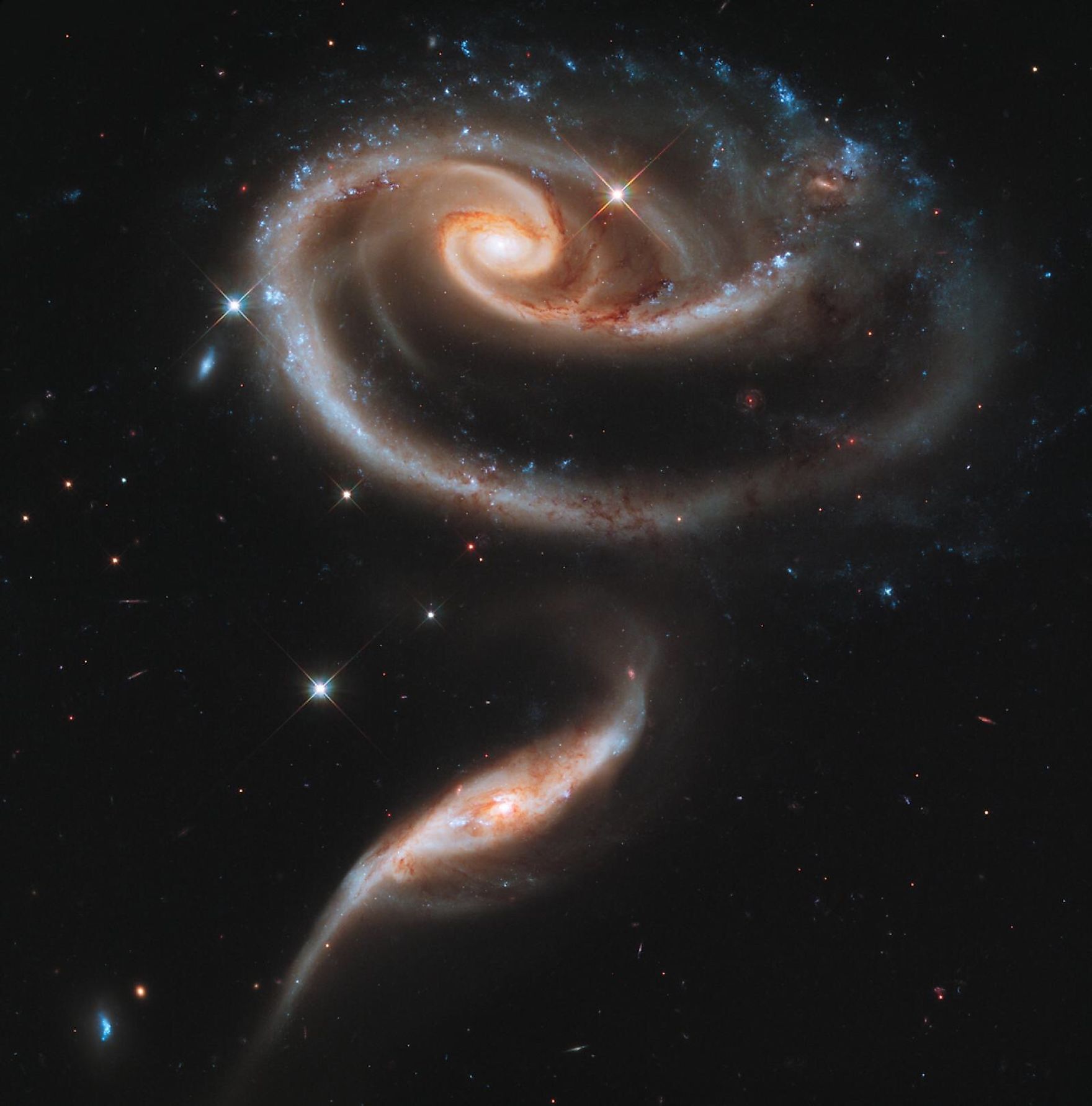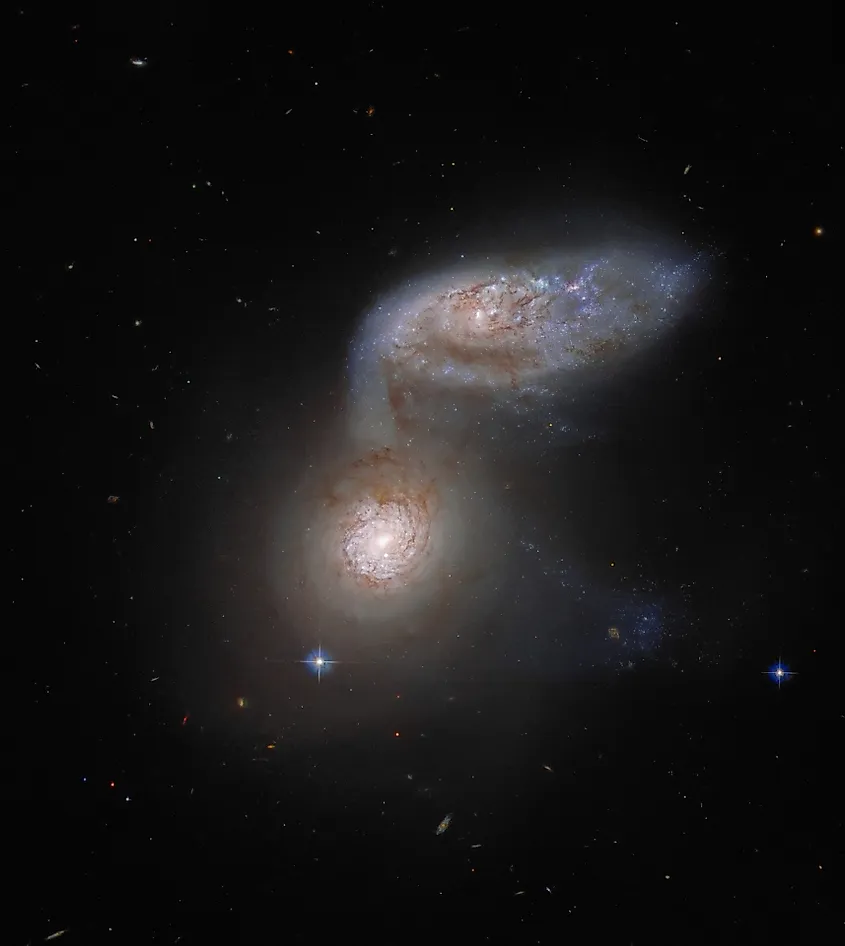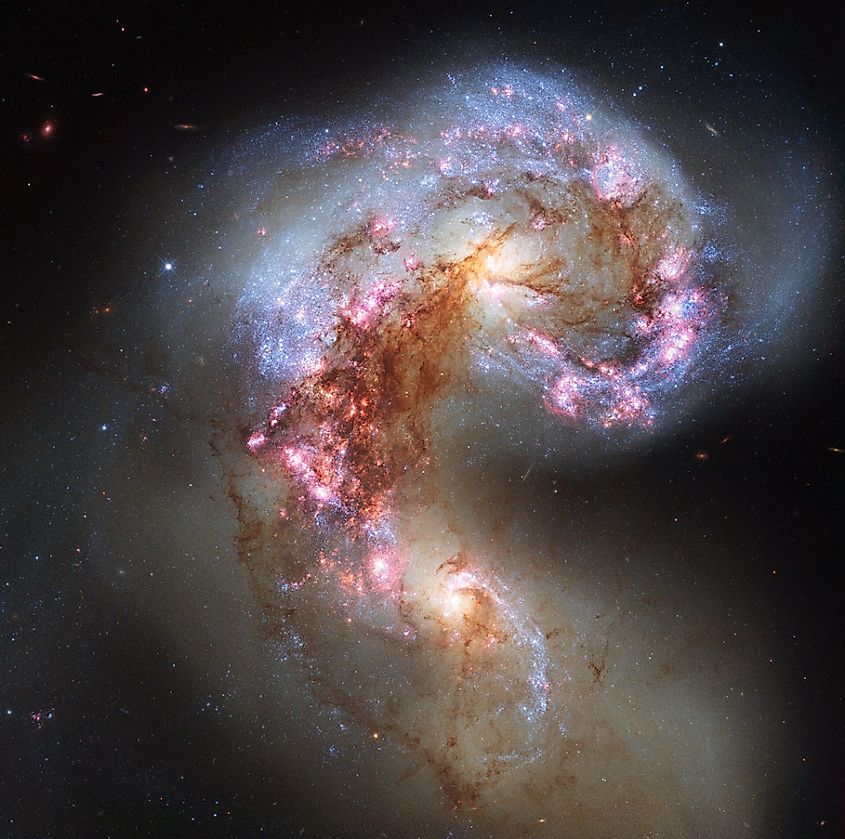
What Happens When Galaxies Collide?
Galactic collisions are among the most spectacular events in the cosmos. Collisions between galaxies are commonplace among galaxies that coexist in the same cluster. The gravitational attraction between two or more galaxies that are close together will draw them closer throughout many millions of years. What happens when galaxies collide?
A Gravitational Dance

A galactic collision is not a quick process. Galaxies will likely pass through one other multiple times before eventually merging together. The gravitational pull of both galaxies will distort their shapes, making them appear jumbled and disordered. When spiral galaxies approach one another, their arms will become stretched out and distorted. Over the course of many millions of years, merging galaxies will be locked in a gravitational dance. During this dance, the gravitational pull between the galaxies creates what’s called tidal forces. Vast clouds of hydrogen are pulled and compressed, generating friction and causing a massive increase in the rate of star formation.
Although the process is referred to as a galactic collision, it is important to note that stars within colliding galaxies do not actually collide with one another. The distances between individual stars are simply too vast for there to be a high probability of stellar collisions. However, stars will move vast distances during the collision. After the collision, it is unlikely that any given star will remain in its original position. Although stars won’t collide, stellar nurseries, called nebulae, will collide. The larger size of nebulae means that there is a high likelihood they will collide with one another. As vast clouds of hydrogen gas collide, it ignites the formation of countless stars. Gravitational tidal forces and collisions between nebulae cause such a rapid increase in star formation that this phase is called the starburst phase.
During a galactic collision, the supermassive black holes located at the center of both galaxies will eventually merge together and become a single, much larger black hole. The collision of two supermassive black holes generates gravitational waves that move outwards. Furthermore, a tremendous amount of material will fall into the merging black holes, generating a tremendous amount of energy. This process creates what’s called an Active Galactic Nucleus (AGN).
The End Product

During a typical galactic collision, the amount of star formation that occurs will exhaust the amount of usable hydrogen in both galaxies. The rate of star formation slowly decreases until it ceases entirely. After the galaxies fully merge together, they become a large elliptical galaxy, completely devoid of any previous physical features such as spiral arms. Most elliptical galaxies are likely the product of galactic collisions, and there are a few lines of evidence that support this. Elliptical galaxies lack a sufficient amount of star-forming material, so star formation is rare in elliptical galaxies. Elliptical galaxies were also rare in the early universe. This makes sense because not enough time had passed for galactic collisions to unfold and become elliptical galaxies.











